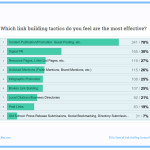AI and Deep Fake
What is Deep Fake?
The Dark Side of Deep Fake
Here are a few examples:
- Fake News:
One of the biggest dangers of deep fake technology is its potential to spread fake news. Imagine a video of a politician saying something outrageous or offensive. Even if the video is completely fake, it could still be shared widely and believed by many people. This could have serious consequences for politics and democracy. - Cyberbullying and Harassment:
Deep fake technology can also be used for cyberbullying and harassment. For example, a person’s face could be superimposed onto pornographic images or videos without their consent. This could have devastating consequences for the victim, including damage to their reputation and emotional trauma. - National Security:
Deep fake videos could also be used for national security purposes. For example, a video of a world leader declaring war could be created and shared widely, causing panic and chaos. This could have serious consequences for global stability and security. - Privacy Concerns:
Finally, deep fake technology raises serious privacy concerns. Anyone’s face could be used to create a fake video without their consent, and it could be difficult to prove that the video is fake. This could have serious implications for personal and professional relationships. Deep fake technology can also be used for cyberbullying and harassment. For example, a person’s face could be superimposed onto pornographic images or videos without their consent. This could have devastating consequences for the victim, including damage to their reputation and psychological distress. - Political Manipulation:
One of the most concerning misuses of deep fake technology is its potential to be used for political manipulation. Deep fake videos could be used to create fake news stories, manipulate public opinion, and even interfere with elections. This could have serious consequences for democracy and global stability. - Fraud and Scams:
Deep fake technology could also be used for fraud and scams. For example, a deep fake video could be created to impersonate someone and ask for money or personal information. This could have devastating consequences for the victim, including financial loss and identity theft. - Creation of Adult Videos without Consent:
Another misuse of deep fake technology is the creation of adult videos without consent. This involves creating fake pornographic videos or images of someone without their consent. This could have serious consequences for the victim, including damage to their reputation and emotional distress. - Impersonation:
Deep fake technology could also be used for impersonation. This could include impersonating a celebrity or public figure, or even a family member or friend. This could have serious consequences for the victim, including damage to their reputation and personal relationships.
Watch a video of how a scammer demanded ransom from an Arizona mom by using deep fake and/ or AI to clone her 15 year old daughter’s voice.
How to Spot Deep Fake Videos:
It can be difficult to spot deep fake videos, but there are some signs to look out for. The first is the quality of the video. Deep fake videos are often not as high quality as genuine videos, and there may be some glitches or inconsistencies in the video. Another sign is the lip-syncing. If the video is not perfectly synced with the audio, it may be a deep fake. Finally, if the video seems too good to be true, it probably is.
The Future of Deep Fake:
The future of deep fake technology is uncertain, but it is likely that it will become even more advanced and convincing. This could have significant implications for politics, with deep fake videos potentially being used to manipulate elections or spread misinformation. It could also have an impact on the entertainment industry, with actors being replaced by digital replicas.
Conclusion
AI and deep fake technology are advancing rapidly, and it is important to be aware of the potential dangers posed by this technology. While there are some signs to look out for when trying to spot a deep fake video, it may become increasingly difficult to distinguish between real and fake. As such, it is important to remain vigilant and cautious when consuming media, and to be aware of the potential for deep fake videos to spread misinformation and manipulate the public.










